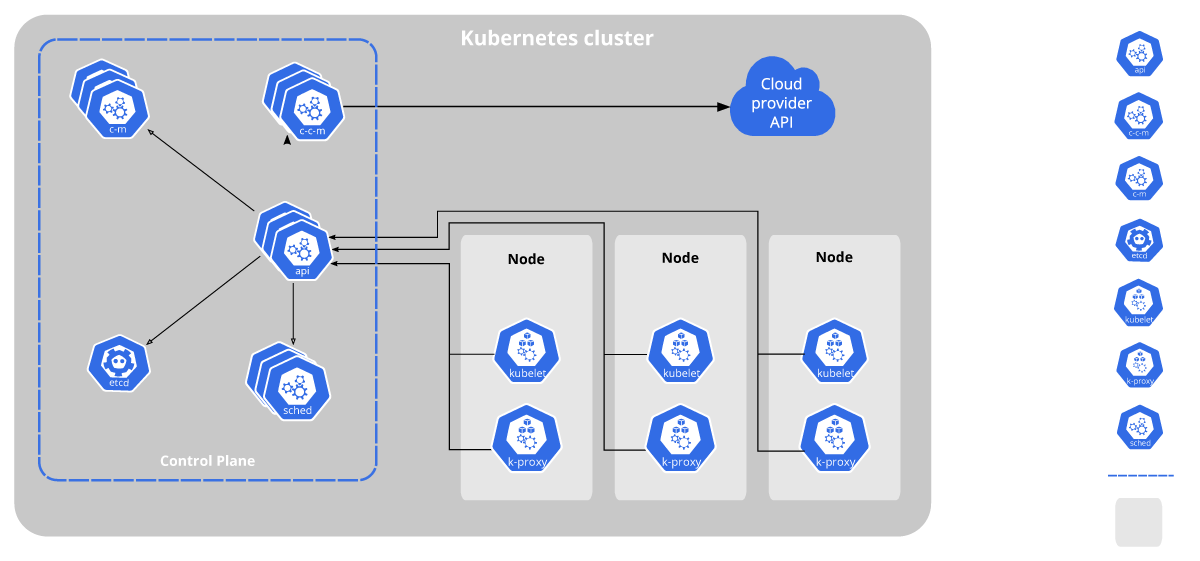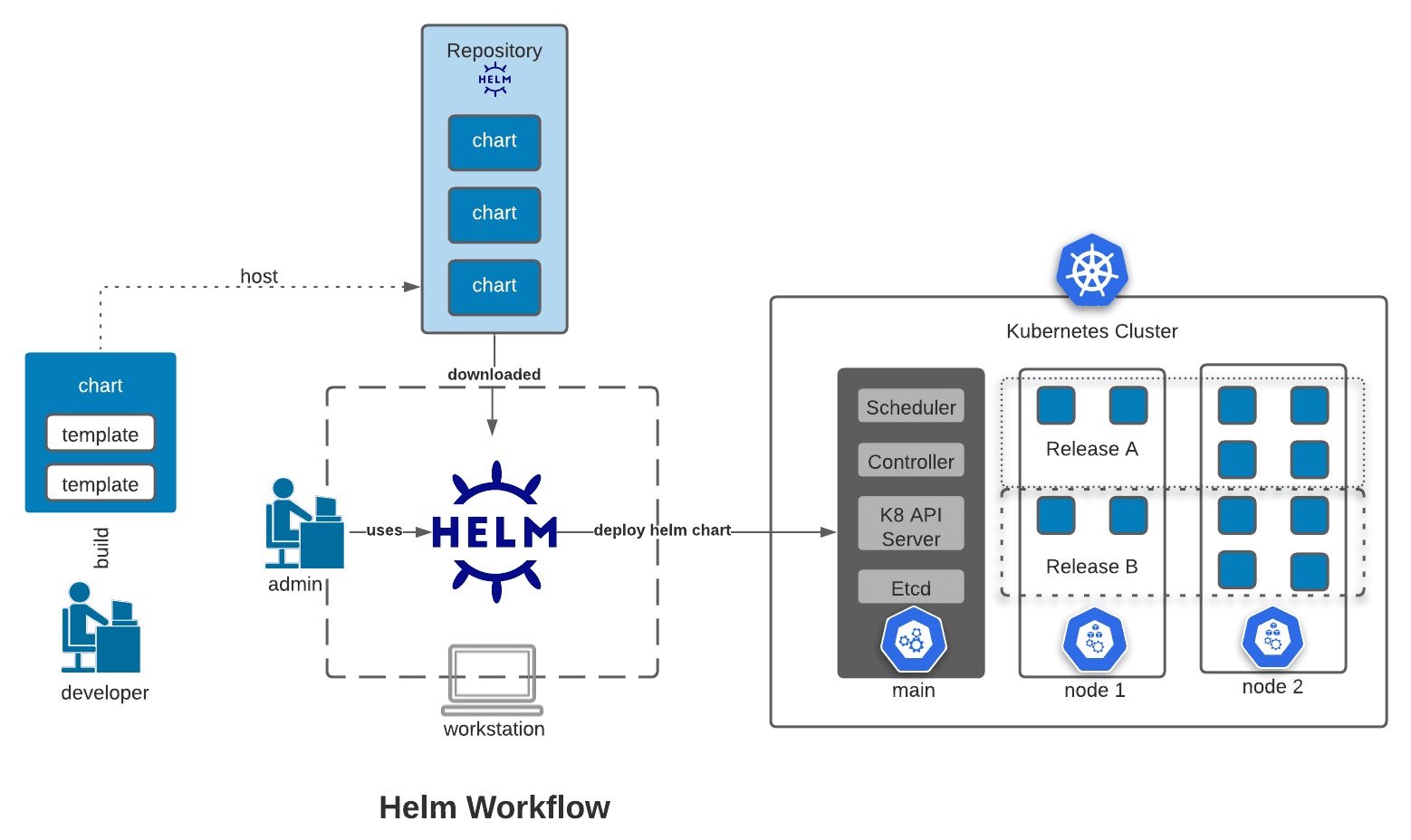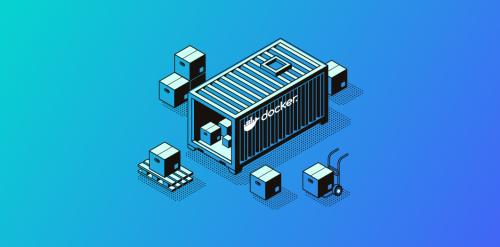
Benefits of Kubernetes and Opigno Cloud
magine that the number of new users on your website has drastically increased, but your base infrastructure with one docker container or base server with Apache can't handle more than 200,000 users per minute. With the Kubernetes Engine, you will be prepared for such a situation.
What is Kubernetes?
Kubernetes (also known as K8s) automates operational tasks of container management through built-in commands for deploying applications, rolling out changes, scaling apps up and down to fit fluctuating needs, monitoring applications' state, etc.
While it makes managing applications easier, Kubernetes is a complex system that requires a DevOps Engineer to handle (unlike Docker, which anyone can deploy and manage.) But no worries: we can maintain your K8s projects on Opigno Cloud! If you want to create projects for thousands of millions of users, you can make your life easier by moving to Opigno Cloud.

Kubernetes YAML configuration is similar to Docker Compose but with more extensive capabilities. In this repository, you create a deployment space with services, such as a Database, API, and Web server, running in pods.
A pod is a group of one or more containers running instances of an application that can be easily scaled. For example, suppose your database experiences a high load. In that case, you can increase the number of containers in its pod by pulling Docker images from a Docker registry to your K8s cluster for deployment.
Kubernetes also offers very flexible storage — volumes. By default, container data is lost when the container stops running because it relies on the image it is built from, and any changes made within the container are not preserved.
A Kubernetes volume addresses this by providing a persistent volume data directory that containers can access and potentially modify within a pod. You can manage which pods or users can access the data stored in the volume by permissions and connect several pods to one volume. For example, for deploying a database, you can use a single persistent volume for all containers within the pod.
Credentials, such as database passwords, are stored in a special service called Secrets. This service allows communication between services, like your API and database. Encrypting your credentials before placing them in Secrets ensures they are not stored in plain text within the environment or configuration files.
Manually updating a cluster for every change can be cumbersome. To streamline this process, Kubernetes offers deployment tools. Helm is a popular choice for Kubernetes deployments. It allows you to create CI/CD integration between Gitlab, Helm, and your K8s cluster.

What is Helm? Helm is a package manager for K8s applications. Helm Charts are the packages that bundle all the resources like deployments, services, configs, and secrets needed to deploy an application into a single unit, thus helping you define, install, and upgrade even the most complex Kubernetes application.
Charts are easy to create, version, share, and publish. You can create your own repository or package and store it in Gitlab or other storage or leverage public repositories for pre-built charts. Helm also simplifies installing plugins or utilities. For example, you can install Teleport (Secure SSH service) via Helm chart in 1–2 minutes and manage access to your cluster.
With all these advantages, Kubernetes makes creating and managing your application as quick and efficient as possible. However, you can benefit even more from Opigno Cloud specialists' expertise in working with K8s projects. Contact us now to learn how Opigno Cloud can power your applications.


